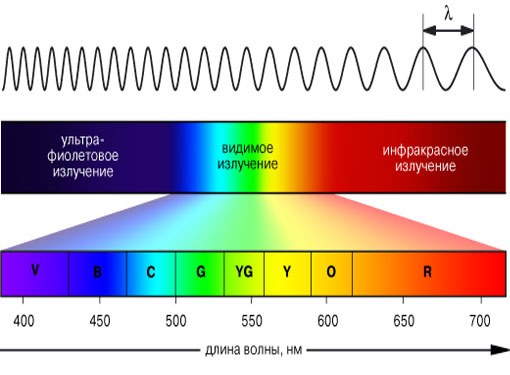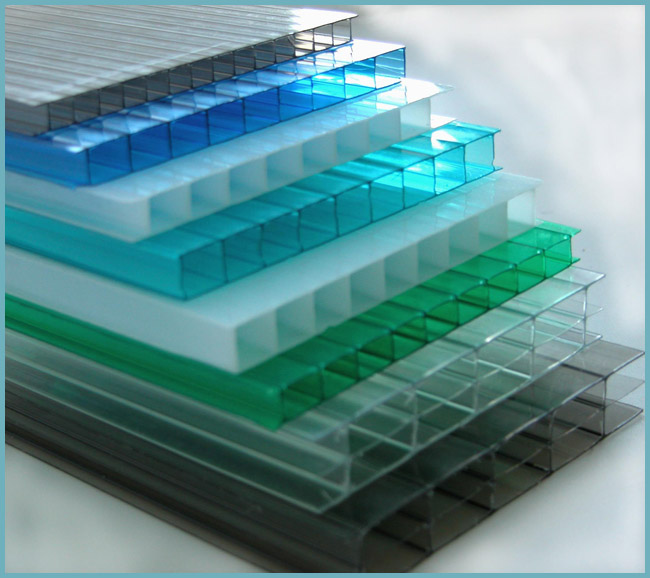Which is better to choose polycarbonate for a greenhouse
Content
Polycarbonate type: monolithic or honeycomb
Polycarbonate for a greenhouse is the optimal solution for each owner arranging a good greenhouse. High-quality modern polycarbonate for a greenhouse must have the appropriate technical characteristics. It is lightweight - even the reinforced version of the material is lightweight. At the same time, the strength does not suffer at all. The level of thermal conductivity of polycarbonate for greenhouses is several times less than that of glass we are used to. This is achieved due to the cellular structure, which allows you to maintain an optimal temperature regime inside the structure. Polycarbonate transmits light rays better than glass.

The diffuse effect makes it possible not to think about shading the greenhouse. Sometimes the manufacturer supplies the material with a film that can protect it from excessive UV radiation. Modern material withstands mechanical stress better and withstands the vagaries of the weather. When destroyed, it does not form a scattering of fragments, has a high degree of fire resistance. Has convenient overall dimensions. Greenhouse installation can be performed even by beginners without professional equipment.
The classification of polycarbonate implies its division into honeycomb and monolithic types. Honeycomb is a transparent hollow material, the walls of which are inside. The sheet is like a sandwich, between the dense walls of which there are perpendicularly stiffening partitions. Cellular polycarbonate weighs very little - 15 times less than glass. When replacing glass with this material, no additional fasteners are required. Plastic is very flexible, which makes it possible to create a structure of complex shapes.

What technical features are most important to cover the greenhouse
The honeycomb type of material has a light transmittance up to 86%. The monolithic type does not have voids inside the sheet, like a honeycomb. It looks more like glass, only more durable. It weighs more than a cell phone and has a higher cost. Any type of material is also called profiled, since it is capable of having a smooth or wavy surface. Which type of material is best? Monolithic is more aesthetic in appearance, and the second is more practical and functional. The choice is always yours.
Determining the width
Experts call its width or thickness an important parameter for the subsequent operation of polycarbonate. Factory sheets of material are offered in a wide range - from 4 to 2.5 mm. The 4mm material is prone to deformation, but is popular with gardeners when setting up greenhouses. There are sheets that are even wider - up to 8 mm. They are used for the construction of outbuildings or covering sheds. Depending on the width of the sheets you will use for the construction of the greenhouse, you will need to choose the allowable radius of its bending, the structure of the panels, the minimum distance between the supports, and the like.
It is important to make competent calculations of future snow and wind loads on the structure, air temperature in winter and summer periods. For standard medium-sized greenhouses - 3 by 6; 2, 8 by 8; 3, 2 by 10 meters, it is permissible to use sheets with a width of 4 to 8 mm. If the winter in the region does not have temperatures below 26 degrees, and in the summer the thermometer does not rise to +34, then this material will be enough.
UV Protection Video
Choosing the optimal color

Dependence of UV radiation on the color of the material
Do not be surprised, because the question of what color of the material is better to choose is important. To decide which color to choose, it is worth considering that plants require a lot of light. This is true for the spring and winter period. Different manufacturers offer panels of excellent transparency - some are cleaner, others less. Turquoise and blue colors are not suitable for the construction of a greenhouse - it changes the appearance of things, can be used as an advertising version of the material.
To decide which color to choose, you need to consider the rationality of using colored material. Transparent transmits sunlight through the walls by almost 90%. Matt, which is used by gardeners to protect plants from possible burns, provides 65% light penetration into the greenhouse.
This can slow down the process of photosynthesis and adversely affect the normal development of plants. Plants receive less light if less sunlight gets into the greenhouse through the structure. It is permissible to choose a material of any color if it is important for the owners that the shades of green, blue and red absorb three times more light. In areas with a favorable climate and the absence of strong winds, it is recommended to give preference to yellow.

The ability of such materials to transmit light is up to 72%. When growing mushrooms and berries, it is better to choose polycarbonate of darker shades - green, brown, red. It is better to refuse to use blue or turquoise colors. It does not allow the light streams necessary for normal plant photosynthesis to pass through. If you have access to inexpensive electricity to heat and light your polycarbonate greenhouse, you can build it in any color you like.
UV protection - is it necessary
The consumer is advised to pay attention to the presence of UV protection of the material. Experts and experienced gardeners are sure that such a parameter is needed for high-quality material. Surface application of ultraviolet coating is one-sided, two-sided, or the introduction of a protective layer into the structure. It is recommended to purchase materials with one- and two-sided coating for the construction of a greenhouse on a personal plot. If protection is included, then its percentage should be more than 46 and not less than 30%. This applies to all types of structures designed for outdoor use. Such characteristics must be checked independently - they are indicated in the passport or certificate for the goods.
Video "Choosing a polycarbonate greenhouse"
In order to build the most adapted, reliable and fruitful greenhouse, the choice of polycarbonate should be approached as responsibly as possible. The video below will help you with this.
